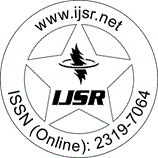Downloads: 41
India | Biotechnology | Volume 14 Issue 11, November 2025 | Pages: 1086 - 1091
Sickle Cell Disease and its Revolutionised Treatment: A Crispr/Cas9 Tale
Abstract: Sickle cell disease (SCD) is a hereditary disorder characterized by the abnormal shape of red blood cells due to a mutation in the HBB gene on chromosome 11. This condition leads to various symptoms, including severe pain, fatigue, and complications such as vaso-occlusive crises. Traditional treatments have focused on symptom management, with recent advancements in therapies like hydroxyurea and monoclonal antibodies providing some relief but not addressing the root cause. The advent of CRISPR/Cas9 gene editing technology represents a significant breakthrough in the potential treatment of SCD, allowing for precise correction of genetic defects or reactivation of fetal hemoglobin production. Early clinical trials, particularly the CTX001 therapy, have shown promising results, leading to the first regulatory approval of a CRISPR-based treatment. However, challenges remain, including safety concerns, ethical implications, and accessibility issues, particularly in low-resource settings. Future advancements in gene editing techniques and delivery systems, alongside equitable healthcare policies, are crucial for the widespread adoption of CRISPR therapies in SCD management. This review highlights the transformative potential of CRISPR/Cas9 in addressing the genetic basis of SCD and the ongoing journey towards effective and accessible treatments.
Keywords: CRISPR/Cas9, Sickle Cell Disease
How to Cite?: Khushi Popli, "Sickle Cell Disease and its Revolutionised Treatment: A Crispr/Cas9 Tale", Volume 14 Issue 11, November 2025, International Journal of Science and Research (IJSR), Pages: 1086-1091, https://www.ijsr.net/getabstract.php?paperid=SR251112182504, DOI: https://dx.doi.org/10.21275/SR251112182504
Rate This Article! View 3 Comments
